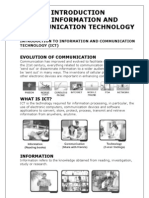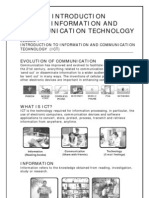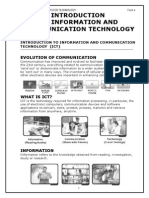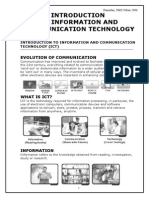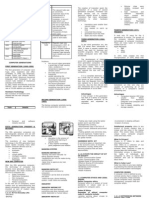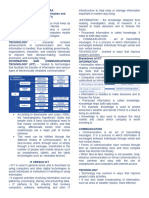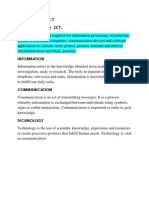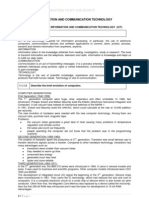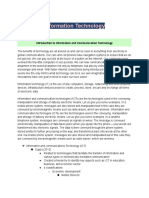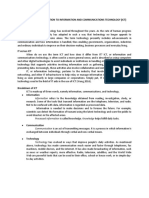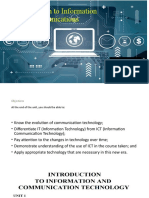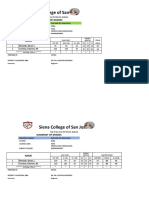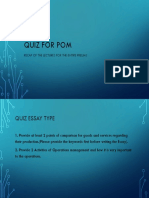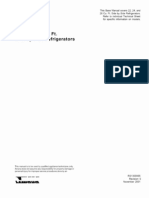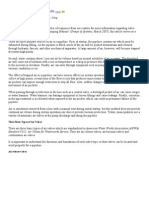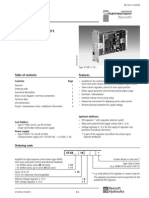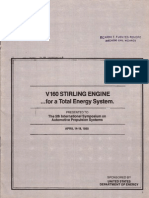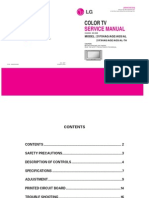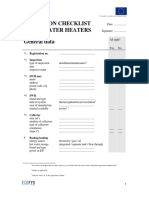0% found this document useful (0 votes)
134 views28 pagesIntroduction To ICT
The document provides an overview of information and communication technology (ICT), including definitions of key terms like information, communication, and technology. It discusses the evolution of communication technologies and computers over time, from early inventions like the abacus and printing press to modern devices like smartphones, the Internet, and microprocessors.
Uploaded by
Dexter AlcantaraCopyright
© © All Rights Reserved
We take content rights seriously. If you suspect this is your content, claim it here.
Available Formats
Download as DOC, PDF, TXT or read online on Scribd
0% found this document useful (0 votes)
134 views28 pagesIntroduction To ICT
The document provides an overview of information and communication technology (ICT), including definitions of key terms like information, communication, and technology. It discusses the evolution of communication technologies and computers over time, from early inventions like the abacus and printing press to modern devices like smartphones, the Internet, and microprocessors.
Uploaded by
Dexter AlcantaraCopyright
© © All Rights Reserved
We take content rights seriously. If you suspect this is your content, claim it here.
Available Formats
Download as DOC, PDF, TXT or read online on Scribd
/ 28

